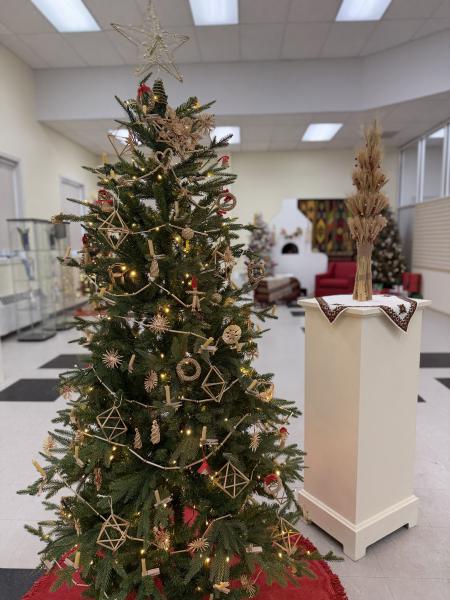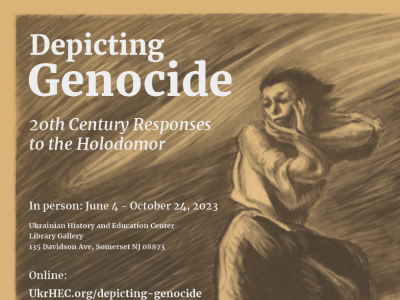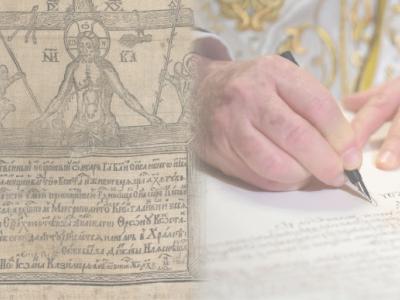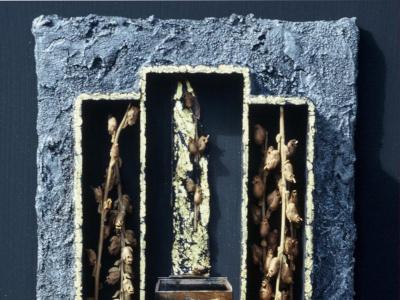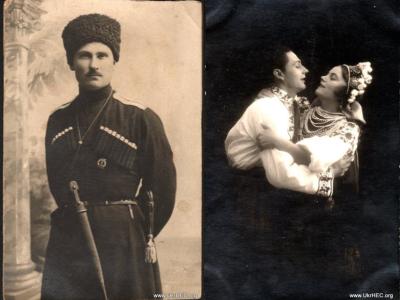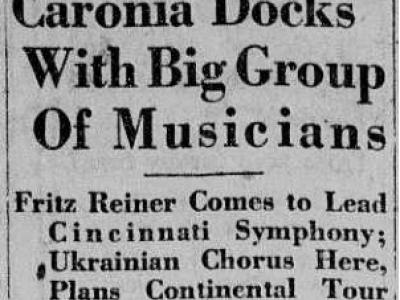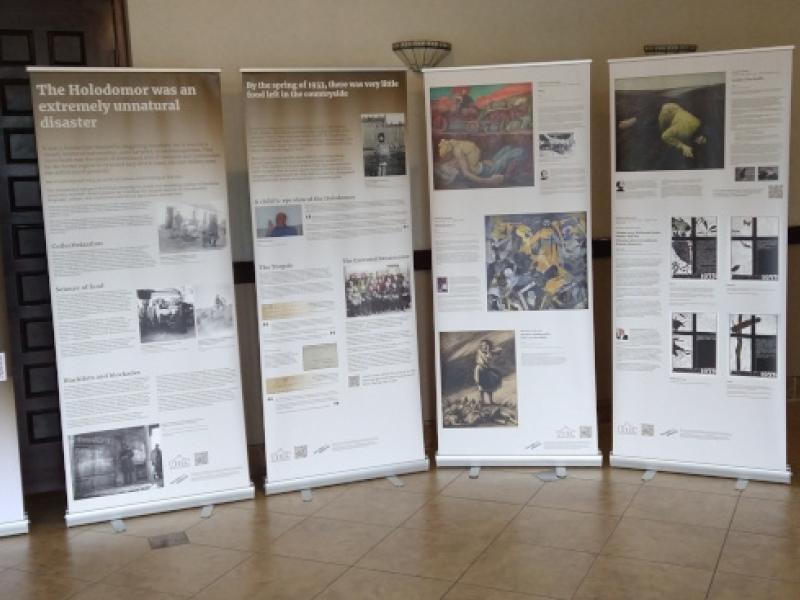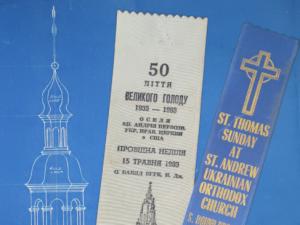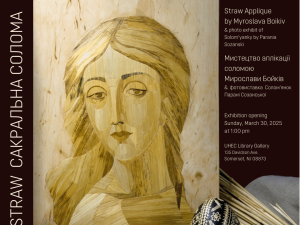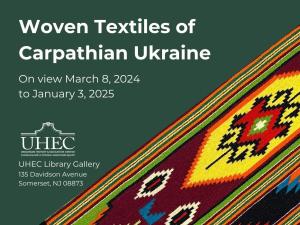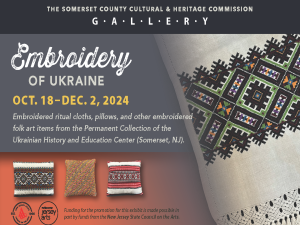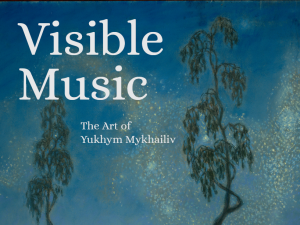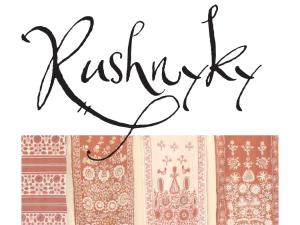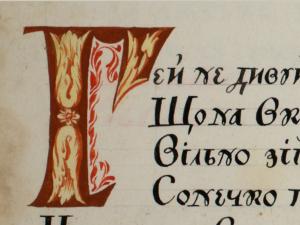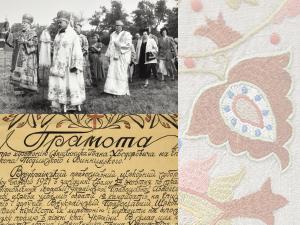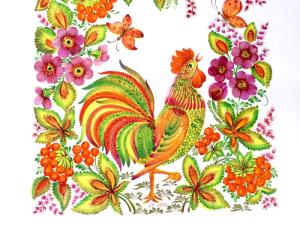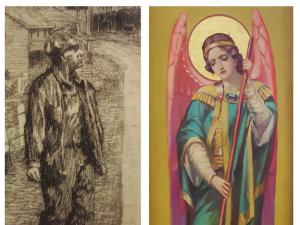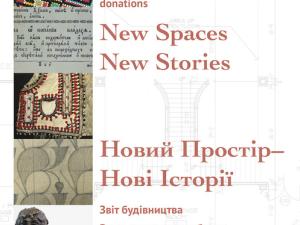The Library Gallery will be closed on December 24th, 25th, and 26th. We wish everybody a wonderful holiday season!
Now on view
Festival of Ukrainian Trees
Friday, December 5, 2025 to Friday, January 30, 2026
Celebrate the season with nine festively decorated Ukrainian Christmas trees alongside artifacts from the UHEC collection.
Traveling exhibitions
Depicting Genocide: 20th Century Responses to the Holodomor
For more than a half-century, artistic memorializations of the Holodomor were remarkably rare. The UHEC is honored to have a number of these early works in its permanent collection. This exhibition explores the varied approaches that artists have used to tackle the topic of this genocidal artificial famine. In addition to images of the artworks, it also provides information on the Holodomor as a historical event and its impact on Ukrainian society, without which the artwork cannot be fully appreciated.
Past exhibitions
On view 10/14/2025 to 11/21/2025
On view 05/12/2021 to 06/30/2022
On view 01/22/2020 to 03/05/2020
On view 11/04/2017 to 04/16/2018
On view 10/15/2016 to 01/19/2017

